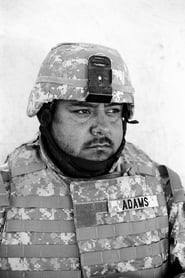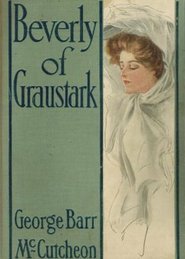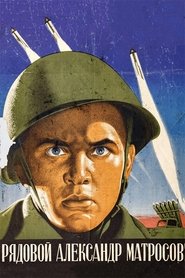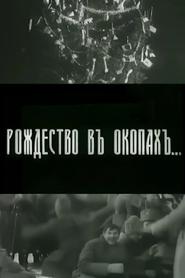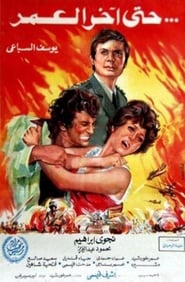Top Rated War Movies on Tub Tv - Page 322
-
Who will die today?
1967
Who will die today?
1967
star 7This film ballad is dedicated to those who never returned home from WW2. A group of retreating Soviet soldiers, crossing a lunar terrain in a desperate attempt to escape death, is attacked by a German fighter plane that appears like a bolt from the blue. One by one they are killed. Then suddenly, in an unlikely denouement bordering on the mystical, the attacker is shot down with a simple rifle. For ideological reasons that defy understanding this film, one of Viktor Hres’ earliest works, was shelved in 1967 by Soviet censors. In 2010, it was restored by the Debut Studio of the Oleksander Dovzhenko Film Studio with the support of the Ministry of Culture and Tourism of Ukraine. -
Levitan: That Night
1932
-
Haifa Street
2019
Haifa Street
2019
star 72006, Baghdad is ravaged by sectarian violence. Haifa Street is the epicenter of the conflict. Ahmed gets dropped off there by a taxi on his way to his beloved Suad's home to ask for her hand for marriage, he gets shot by Salam, a sniper who's living his own personal hell on a rooftop above. -
Ceasefire
2019
Ceasefire
2019
star 4During the final year of WWII a young member of the 104th Infantry Division's first contact with the enemy subverts his expectations. -
Fort Irwin
2019
Fort Irwin
2019
star 4To confront his past trauma, an amputee veteran acts in a hyperrealistic military simulation. -
Attrition
2018
Attrition
2018
star 6Supernatural drama set in the British trenches of WW1. Along with the rest of his platoon, young Private Edwin Childs fears imminent German gas attacks. As the dreaded attack begins, how much will Edwin give of himself in the ultimate act of compassion towards his fellow men? -
Eclipse
1995
Eclipse
1995
star 6In ECLIPSE a child survivor wanders barefoot across a stunningly evocative landscape. Director Jason Ruscio expresses the profound loneliness of a decimated world through richly textured images that bring to mind the films of Andrei Tarkovsky – burned out interiors, hands grasping to hold each other, time-worn photographs and faceless soldiers in the snow. ECLIPSE is a remarkable meditation on the effects of war. Preserved by the Academy Film Archive in partnership with New York University Tisch School of the Arts Graduate Film & Television in 2016. -
Beverly of Graustark
1914
Beverly of Graustark
1914
star 5Beverly Calhoun is invited by her friend, Princess Yestive of Graustark, to pay her a visit. On her journey, she is waylaid by bandits, and becomes entangled in the political problems of a neighboring country, whose ruler Prince Dantan, has been ousted by his evil half-brother Gabriel. Dantan, disguised as a simple goat hunter, has been driven into hiding in the mountains with his followers. Beverly is rescued by his band of rebels, but is mistaken for Princess Yestive. Beverly and Dantan fall in love, but their romance is complicated, not only by the hostilities between the two countries, but also because neither of them knows the true identity of the other. -
Arnhem: The Story of an Escape
1976
star 4Graeme Warrack was Divisional Chief Doctor of the 1st Airborne Division at the Battle of Arnhem in September 1944. With other doctors, medical personnel and padres, he stayed behind with the wounded. The first improvised hospital was a German-occupied Dutch military barracks at Apeldoorn. From here, the wounded were transported to prisoner of war camps in Germany. As the last of the wounded left, Colonel Warrack escaped. -
Phool Aur Kantay
2010
-
Private Aleksandr Matrosov
1947
star 10The film is about the exploit of a nineteen-year-old soldier of the Great Patriotic War - Alexander Matrosov, who covered the embrasure of the enemy's bunker with his body. -
Australia Prepared
1916
Australia Prepared
1916
star 7Australia Prepared highlights the country's contributions to the First World War, beginning with the recruiting of soldiers after war is declared. Segments include: footage of troops training at Liverpool Camp, NSW; the manufacture of rifles and ammunition; shipbuilding at Cockatoo Docks; and the production of khaki soldiers' uniforms. -
Lest We Forget
1918
Lest We Forget
1918
star 6A story of the First World War, told in semi-documentary style, focusing on the iniquities of the German war machine, and with its dramatic center the sinking by a German U-boat of the passenger liner Lusitania in 1915. -
Hatta Akher AlOmr
1975
Hatta Akher AlOmr
1975
star 5"Mona" girl club girls admire young "Ahmed" who does not exchange love for love, but does not care about them at all, travel abroad on a business trip. One day Mahmoud hints at "Mona" and admires her and marries her. The father agrees and they get married. They live a happy life. Ahmed returns from abroad. The case is confirmed when Mahmoud sees him and Ahmed in the club, so he decides to divorce her, but he goes to the front. But she resists, and renewed her hope to recover "Mahmoud" after the return of a colleague from abroad has recovered from injury Similar to Mahmoud's injury. -
Vicarious
2019
Vicarious
2019
star 8Jake Thompson rather likes to dream than live his real life. When his fantasy doesn't fulfill him anymore he has to find a new way to be happy again. Will he be able to realize his aim? -
The Secret of China
2019
 Netflix
Netflix
 Amazon Prime Video
Amazon Prime Video
 Apple iTunes
Apple iTunes
 Apple TV Plus
Apple TV Plus
 Disney Plus
Disney Plus
 Google Play Movies
Google Play Movies
 Paramount Plus
Paramount Plus
 Hulu
Hulu
 HBO Max
HBO Max
 YouTube
YouTube
 fuboTV
fuboTV
 Peacock
Peacock
 Peacock Premium
Peacock Premium
 Amazon Video
Amazon Video
 The Roku Channel
The Roku Channel
 AMC+
AMC+
 Kocowa
Kocowa
 Hoopla
Hoopla
 The CW
The CW
 Vudu
Vudu
 Starz
Starz
 Showtime
Showtime
 PBS
PBS
 Pantaflix
Pantaflix
 FXNow
FXNow
 Tubi TV
Tubi TV
 Kanopy
Kanopy
 Comedy Central
Comedy Central
 Crunchyroll
Crunchyroll
 Microsoft Store
Microsoft Store
 Redbox
Redbox
 Sun Nxt
Sun Nxt
 ABC
ABC
 DIRECTV
DIRECTV
 Crackle
Crackle
 Fandor
Fandor
 Plex
Plex






